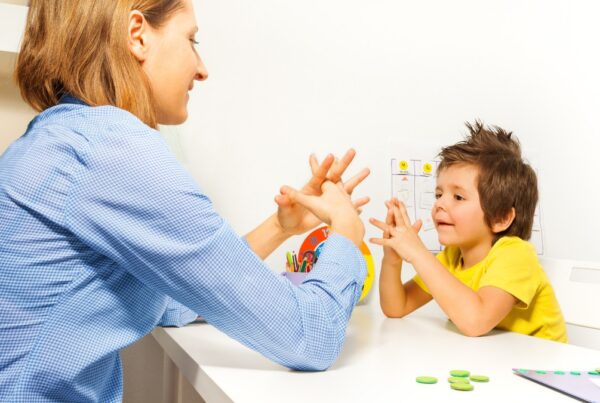Key Points:
- Video modeling is a powerful tool in ABA therapy that demonstrates desired behaviors through visual examples.
- It can be used to teach a wide range of skills, from social interactions to self-care tasks.
- Video modeling ABA is effective because it capitalizes on the visual learning strengths of many children with autism.
Teaching children with autism can be tricky, especially when traditional methods don’t always connect. Many kids on the spectrum are visual learners, meaning they grasp concepts better through visual cues than verbal instructions. Video modeling ABA taps into this strength, making learning more effective and accessible for children with autism.
What is Video Modeling in ABA Therapy?
Video modeling ABA is a strategy that uses video recordings to show children with autism how to perform certain behaviors or tasks. These videos feature real-life examples of individuals modeling the desired behavior, whether it’s something as simple as greeting a peer or as complex as completing a multi-step task.
Why Video Modeling Works So Well for Children with Autism
Video modeling is highly effective for children with autism because it caters to their strong visual learning abilities. Many children on the spectrum find it easier to understand and retain information presented visually rather than through verbal instructions.
Additionally, video modeling allows children to learn at their own pace. They can pause, rewind, and re-watch videos until they grasp the concept, which helps reinforce learning. This level of control over the learning process can lead to better understanding and retention of skills.
Another reason video modeling is so effective is that it reduces distractions. Watching a video on a screen provides a structured, predictable environment, which minimizes external stimuli. This helps children with autism stay focused on the task at hand without becoming overwhelmed or distracted by other factors.
Implementing video modeling ABA in therapy requires careful planning to ensure the video is appropriate for the child’s learning needs. Here’s a step-by-step guide on how to effectively use video modeling in ABA therapy:

Types of Video Modeling in ABA Therapy
There are several types of video modeling ABA, each serving a unique purpose in teaching children with autism. The right approach depends on the child’s learning style, the skill being taught, and the level of support they need to succeed.
Basic Video Modeling
This method involves showing the child a pre-recorded video of another person demonstrating the desired behavior. The model in the video could be a therapist, parent, peer, or even an actor. Basic video modeling is useful for teaching social skills, communication, and daily living tasks in a structured way.
Point-of-View Video Modeling
Point-of-view modeling presents the skill from the learner’s perspective. The video is recorded as if the viewer is performing the task themselves, allowing them to see exactly what they would do in real life. This is especially helpful for self-care routines, like brushing teeth or tying shoelaces.
Video Self-Modeling
In this technique, the child is recorded successfully performing the behavior themselves, sometimes with assistance. The video is then edited to remove any prompts or errors, allowing the child to watch themselves succeed. This boosts confidence and reinforces positive behavior through self-recognition and motivation.

How Parents Can Use Video Modeling at Home
Parents can also easily incorporate video modeling ABA into their child’s home routine. Here are a few ways to get started:
- Create Simple Videos: You don’t need professional equipment to create effective video models. Use your smartphone or tablet to record simple behaviors that you want to reinforce, like washing hands or dressing independently.
- Use Everyday Situations: Film everyday situations that your child is likely to encounter, such as grocery shopping, going to a doctor’s appointment, or playing with peers. These videos can help your child prepare for real-life scenarios.
- Reinforce the Behavior: After your child watches the video, encourage them to practice the skill and provide positive reinforcement when they do it correctly. This will help them learn to generalize the skill across different contexts.
Partner with Crown ABA for Effective ABA Therapy
Video modeling ABA is an incredibly effective tool for teaching children with autism a wide range of skills. By capitalizing on visual learning, video modeling can help children master everything from social interactions to self-care routines.
Whether you’re a parent or a practitioner, incorporating video modeling into your child’s therapy can lead to quicker skill acquisition and greater independence.
If you’re seeking personalized ABA therapy to help your child succeed, Crown ABA is here for you. Our experienced team of ABA therapists in Maryland utilizes proven strategies like video modeling to help children develop essential skills in a supportive, encouraging environment.
We offer ABA therapy services in Maryland and surrounding areas. Reach out today to learn how we can support your child’s growth and development with ABA therapy!





